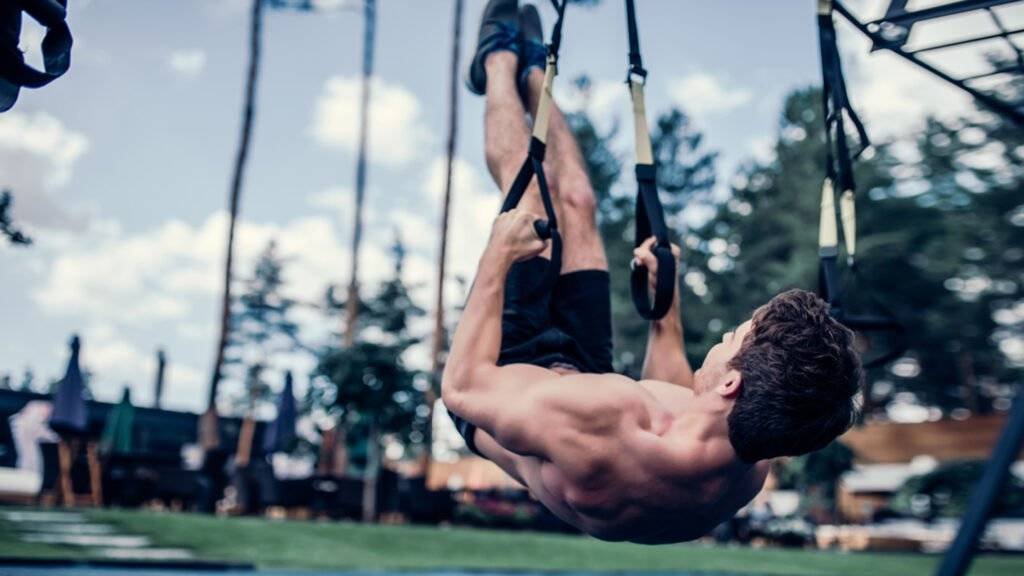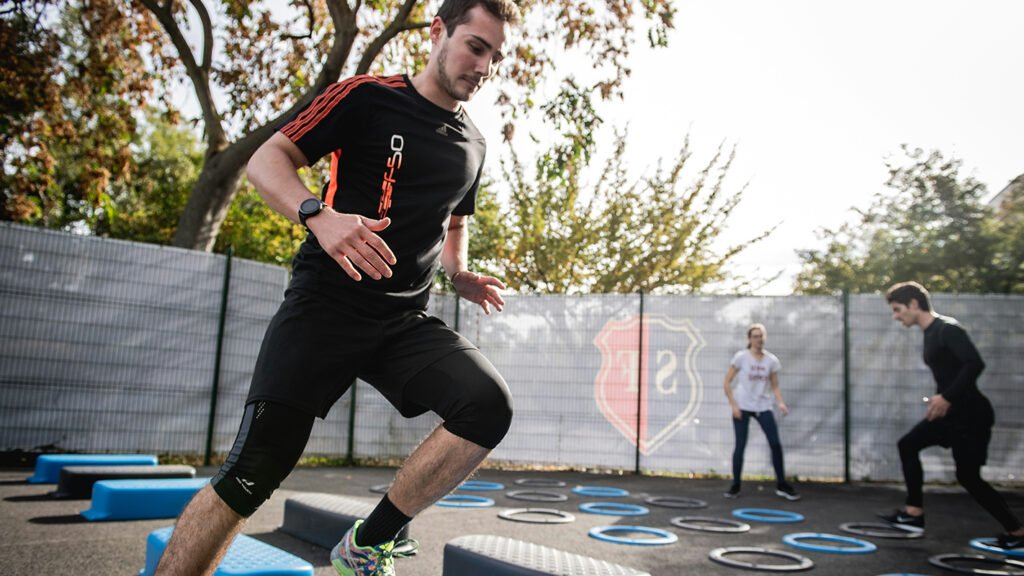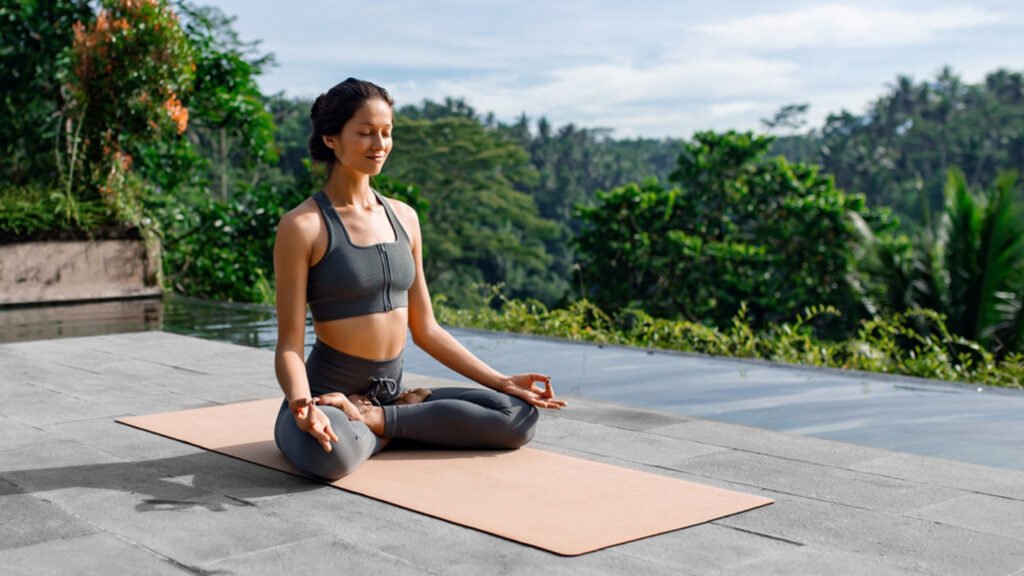Outdoor Workouts: Harness Nature’s Power and Transform Your Fitness Journey
Looking to spice up your routine and break out of fitness monotony? Maybe outdoor workouts would be your perfect solution. Picture putting stale air from the gym for a refreshing breeze, or investing your treadmill viewing for a nice trail. If you’re not exercising outside, you’re missing out on so much more than just scenery: you’re getting a complete body workout, you’re getting your head in the right space, and you’re reconnecting with nature.
Table of Contents
ToggleOutdoor Workouts is a dynamic and flexible option whether you’re looking to increase endurance, increase strength, or just like fitness without the distractions. There’s everything from running in the park to bodyweight exercises on the beach. By taking the right approach you can utilize the natural environment to increase your physical health and rejuvenate the mind by being outdoors.
Let’s start diving into how outdoor workouts can change how you approach fitness! For those of you who enjoy a bit of exercise outdoors, let’s have a look at the pros and cons of maximizing your outdoor time.

Why Choose Outdoor Workouts?
How long was it since you felt reconnected to your workout? If you’re burnt out on looking at gym walls or feeling uninspired by indoor exercises, outdoor workouts may be the ideal pick-me-up for getting back into fitness. The fresh air, the lovely surroundings are not the only reasons why working out outdoors can be so transformative for your physical and mental health.
Here are just a few benefits that make outdoor workouts a smart choice:
Boosts Mental Health: Studies have shown it can lower stress, anxiety, and depression by spending time outdoors. Of course, exercising in natural surroundings can supplement these effects and make you feel calmer and more focused.
Challenges Your Body in New Ways: While the gym’s predictable surfaces are favorable, the parks, trails etc. have varied terrains. It is quite naturally engaging different muscles and thus helps balance, coordination, and health in general.
Increases Motivation: There’s something about being in the open air that naturally energizes you. The scenery, different sounds of nature, and natural light all help to make the thought of sticking with and staying consistent with your workouts a little bit easier.
Cost-Effective Fitness: Outdoor workout — one of the biggest perks? They’re free! No gym membership is required, just lace up your shoes and go.
Variety and Flexibility: Outdoor workouts allow you to change up your routine – moving from jogging or cycling in the park to full body bodyweight circuits on the beach. It will allow you to explore new activities, but also keeps your fitness fresh and exciting.
Why Exercising Outdoors May Be Better For You
Outdoor exercise is backed up by scientific studies. Studies show that outdoor physical activity is found to leave you feeling more revitalized and engaged. In addition, exposure to natural environments seems to have reduced mental fatigue and enhanced cognitive function.
But why sit down to workout when you can use the great outdoors to amp up both your body and mind?
Outdoor workouts are both good for your physical wellness and for your mental clarity as well, making it a more holistic approach to well being.
Ready to give it a try? The advantages you need are right on the doorstep.

Types of Outdoor Workouts
And once you’re jazzed to benefit from outdoor workouts, it’s time to break down some of the different kinds of exercises you can integrate into your schedule. There’s an outdoor option for everyone whether it’s to build strength, increase cardiovascular endurance or to just get a dynamic workout. Whether it’s your goals or where you are, one of the beauties of working out outdoors is the variety—you can easily mix it up until you can’t think what to switch up next.
Here are some great options to consider:
1. Running or Jogging
Running is one of the simplest, most effective forms of outdoor exercise and a great way to improve cardiovascular health, increase endurance, and lift one’s mood. Whether that’s on trails, along the beach, or your local park, you’ll enjoy the freedom of an ever-changing landscape.
Joggling should start as light jogging and you should continue increasing your pace or distance as stamina becomes better. I don’t want to forget that you need to bring your good running shoes and hydration plan!
2. Bodyweight Training
If you want to build strength, but don’t have equipment on hand, want to target specific areas of your body, or just want to step out of your comfort zone, then I’m here to tell you that you’re in luck. It’s possible to build strength without equipment! Push-ups, squats, lunges, and planks, are all great body-weight exercises to do outdoors. You can convert any park bench, playground, or open space into a personal gym.
Setting up a circuit is a great way to have fun with bodyweight training. For example:
– 10 push-ups
– 20 squats
– 15 lunges (each leg)
– 30-second plank
Do 3 or 4 times, resting 30 seconds between rounds.
3. Outdoor Yoga
Doing yoga in nature gives anda nice, calming, meditative aspect to your workout. No matter where you practice, you no doubt appreciate the fresh air and beautiful surroundings that accompany a good yoga session. Yoga done outside improves flexibility, balance and mental clarity; and helps reduce stress.
Take a yoga mat or a towel with you and different sequences follow your energy level, but especially sun salutations are very nice during sunrise or sunset.
4. Hiking
If you like to be challenged at the same time you want to get fit, hiking is a great way to do both. It works on the lower and upper body, increases endurance and allows experiencing breathtaking natural landscapes. Hiking, of course, can also be a serious cardio workout depending on the trail’s difficulty.
Go look for local hiking trails that you can hike at, and don’t forget to have water and snacks on you to keep you powered.
5. Cycling
Cycling can be as low impact or as high reward as you like – you can get a lot of your cardio in while cycling from your car while also getting the outdoors. Doing this exercise while you are biking on a scenic route, in the city bike lanes, will strengthen your legs as well as improve cardiovascular health and burn serious calories!
Plan cycling routes that will explore more things within your area and maybe join a local cycling group for motivation and camaraderie, to have some fun.
There’s always something to do when it comes to keeping the training fresh and fun while keeping outdoor workouts fresh. With the ability to combine multiple types of exercise, you can never be bored and always have something new to look forward to. Plus, these exercises can be easily adapted for all fitness levels, which mean people of all ages, shapes and sizes can do it too.
That means what kind of outdoor workout will you try next?

How to Maximise Your Outdoor Workouts
If you’re ready to expand your outdoor workouts, here are some of our favorite workouts you won’t want to miss. Whether you’re a seasoned athlete or you’re just beginning your fitness journey, outdoor exercise should always be approached with a plan to get the most out of your effort and ensure enjoyment. If you are mindful of your environment, routine, and goals, you will have every workout to get you stronger and more energized.
Here are some tips to help you get the most out of your outdoor workouts:
1. Pick the Right Time of Day
How much you enjoy and have chance of being effective of a given workout can depend on timing. If you’re looking to work out outside, the early mornings or late afternoons are the best times, when the temperatures are cooler and the light less intense — you won’t have to worry about overheating.
Moreover, exercising at these times will allow you to avoid stumbling over the crowds in the park or trail using your exercise time to focus on reaching your goals.
If you’re someone who craves the energy of a busy environment, you might find that you work out better at the busiest times. Regardless, pick a time that plays to your energy levels and preferences.
2. Wear Appropriate Gear
When we exercise outdoors, comfort is the most important thing. When temperatures are hot or humid, wear breathable, moisture wicking fabrics that will help regulate your body temperature. Also, in cooler months wearing layers can help because you can adjust as your body warms up. Don’t leave home without at least a hat or sunglasses to block the sun, and sunscreen to keep your skin safe.
Runners and cyclists alike are hunting for shoes with the best support and traction. Not only will the proper gear make you more comfortable while working, but will also prevent injuries.
3. Stay Hydrated
When it’s warm out, sweating is normal, but again, our sweat can make us dehydrated, especially in the outdoors. Pack a good old-fashioned water bottle or hydration pack and make it a habit to carry it with you so you never lose the water flow during your workout.
Stay hydrated throughout your session, and drink before, during and after your session to maintain endurance and prevent fatigue.
If you’re doing a long or intense workout, then an electrolyte drink, to help you replace what’s been lost in minerals, can be considered.
4. Interval Training
Getting more intense with your outdoor workouts? So try to incorporate high-intensity interval training (HIIT) in your routine. One is to alternate between periods of a lot of effort and short recovery breaks, which can encourage the body to burn more calories and strengthen cardiovascular fitness in less time.
One example of this is, for example, during a run you could, without stopping, sprint for 30 seconds, jog or walk for 1 minute, and repeat the cycle for 20-30 minutes. Cycling fit interval training, bodyweight exercises, and much more. Interval training is also applied to outdoor workouts.
5. Use Your Surroundings
What’s nice about outdoor workouts is that you can incorporate your environment as part of your routine. Park benches, hills, steps, playground equipment, and any place you could see around you can all be used to increase your workouts.
Here are some ideas:
– Where possible, use a bench for step-ups or tricep dips.
– Go to a hill to do sprints or walking lunges.
– Playground comes in with bars at the end for pull-ups or hanging leg raises.
– Your gym is the world outside. Think creatively—how you can use what’s around you to alter your body in new ways.
6. Track Your Progress
If you’re outside, it doesn’t mean you can’t track performance. Get your steps, distance, heart rate, and calories burned down through use of a fitness app or smartwatch. Small, reasonably easy goals like running for an extra half mile each week, or improving your pace somewhat are easy to picture and maintain motivation.
First of all, the monitoring of your progress — seeing your improvements is tangible and tangible gives you confidence and keeps you pushing forward.
If you implement these tips, you won’t only better your performance but also your ability to have fun in workouts outdoors. It doesn’t matter if the sunrise runs, yoga in the park, or whatever natural terrain you’re using for strength training. That means you can enjoy the freedom that outdoor exercise provides, while you’re still making the most of every session.
If you are ready to optimize the next one of your workouts to see even better results, there you go.

Outdoor Workouts Stay Safe
While outdoor workouts have many benefits, you should put safety first, as pulling too many muscles or getting injured is bad for you. The downside to exercising in nature is that it isn’t all roses, literally, as unpredictable weather, uneven terrain, and changing conditions prevail, so sporting the right precautions is crucial to ensure that every session is trouble-free. From regular outdoor enthusiasts to a beginner, it is important to keep safety in mind and have the work out as there is no harm to suffer!
Here are some essential tips for staying safe while working out outdoors:
1. Don’t Go Without Checking the Weather Before You Head Out
If you’re in a region with changing seasons or variable climates, you never know what kind of weather you could get. Every time you head outside make sure you check the forecast to prepare for what comes. Dehydration or hypothermia are serious risks potentially in extreme heat or cold. And that’s good — unless it’s so cold or rainy that you’d need a backup indoor workout plan.
If you can, cut back on exercising between 10 AM and 4 PM when the sun’s out. And for cold weather, put on layers to hold your body heat, take them off as you warm up.
2. Warm Up Properly
When you’re ready to get started, it’s easy to skip the warm-up, but skipping the warm-up can be a big mistake, especially in cold outdoor temperatures. Warming up also causes the blood flow to your muscles to increase, which then makes them less likely to be injured.
Get your body ready and dynamic stretches or a light jog for 5-10 minutes, try these to get the blood flowing in your joints. Mentally preparing you for your workout, warm-up will also prepare you physically and will also help boost your performance and focus.
3. Mind of Your Surroundings
The outdoor environment is unpredictable. If you’re exercising in a busy park or on a trail or near a road, you should always be aware of your surroundings. Unseen obstacles, despite of uneven surfaces and/or other people. For the sake of prevention, if you’re running or cycling, stick to paths that are purpose-built for those activities, so that there is less chance of accidents.
Be safe and remain alert, do not wear headphones too loud in high traffic, and pay attention. That playlist shouldn’t matter more than YOUR SAFETY!
4. Stay Visible
Visibility is key if you prefer to work out at early or late at night. To stand out to other pedestrians, drivers or cyclists, you’ve got to wear bright or reflective clothing. If it’s dark when you run or cycle, then put a headlamp on or carry a flashlight to help you see and to make yourself more visible.
If you’re working out near roads, then reflective gear is a must too. Visibility is low so drivers can miss a pedestrian or cyclist so please prioritize being seen.
5. Listen to Your Body
It’s important to get into the habit of working your ass off to reach your goals, but it’s equally important to know when it’s time to call it. Recognize that something doesn’t feel right, check in with your body. If not careful, over-exerting yourself while doing outdoor workouts, especially in new environments is quite possible.
If you experience sharp pain, dizziness, or extreme fatigue, you have to set aside and think again. Discomfort can also lead us to push through which results in injuries that will not only end your current workout but set you back in the long run. It’s preferable to stop and recuperate than to strain yourself too much and cause injury.
6. Bring Essentials
Whether you’re on the road for a long workout, or even just walking the dog around the block — carrying the right gear is a must. Here are some must-haves:
Water bottle: Keeping hydrated is very important, especially during warm months.
Sunscreen: On cloudy days, protect your skin from damage from harmful UV rays.
Insect repellent: This will keep bugs away if you’re working out near woods or water.
First-aid kit: If you trip or scrape yourself, having a small kit with band-aids, antiseptic wipes, and a few essentials can truly be a lifesaver.
These items pack up easily and you know you’re ready for anything your workout might throw at you.
Outdoor workouts are the perfect way to stay active while being around nature, but, of course, safety has to come first. Conscientious adherence to this advice will reduce your chance of injury, and help you to maintain a healthy level of fitness. And when you do head out to workout next, make sure you thinking ahead and staying safe.
Yet you’re ready for the good stuff—outdoor exercise with safety first?

How to Find Motivation for Your Outdoor Workouts
Sometimes life gets busy or it’s not a great day for the weather and it becomes hard to stay motivated to work out. Yet outdoor workouts represent the one area where you can really rekindle your love for exercise. Bliss is the beauty of nature, fresh air, and the excitement of new environments that your exercise can become much more like a Saturday morning adventure and much less like a workout.
Here are some effective strategies to help you find and maintain motivation for your outdoor workouts:
1. Set Clear Goals
Establishing some clear goals that you can work towards enables you to have a direction for your outdoor workouts. Ask yourself:
- How would I know when I’ve accomplished (run a 5K, hike a challenging trail, get more endurance)
- What is the amount of times I want to work out outdoors?
- Whatever skills you are trying to develop, identify them.
Once you’ve identified your marketing goals, you then break your goals down into smaller, achievable steps. Say for example your goal is a 5K, you’d begin with a plan that increases your distance over time each week. So just celebrate small victories along the way as they will help you boost your confidence and keep you motivated.
2. Create a Workout Schedule
When it comes to fitness consistency is key. Work out specifically for outdoor workouts on specific days and at specific times. Consider these appointments as any other part of your day no less important than any other assignment you might have. The first is to set aside some time when exercise happens, and you won’t be able to skip it—over time, it becomes a habit.
But a simple way to keep things interesting is to mix up your activities throughout the week. E.g. you’d run on Monday, go to yoga on Wednesday, and hike on Saturday.
3. Workout with a Buddy
A beautiful side to getting a workout partner is that it’s a great way to stay motivated. A buddy can not only make your workouts more fun but force you accountable. If not for someone else of you relying on you, you probably will skip your workout. Plus, go out and share your outdoor experiences to get closer and enjoy wonderful memories.
In case you haven’t got a friend to go in with you go for fitness groups or classes with locals that are for the outdoors. The group runs, cycling clubs or such outdoor yoga sessions are many that communities offer and it can be a good way to meet like-minded people.
4. Mix Up Your Routine
One simple way to lose motivation is falling into a routine. Find ways to make your outdoor fitness a little new every day. Try walking a new park, new trails, and new neighborhoods. Here are some ideas:
– Run or cycle another route each week until you’ve done the ones you usually pick.
– See what other hiking trails are near and have not yet discovered.
Go ahead and participate in outdoor fitness events or challenges in your neighborhood.
Changing your environment and activities can be how you spark new enthusiasm and how you avoid burnout.
5. Find Your Leverage with Technology
The array of apps and devices available to help you work out outside is huge. Take for example the use of fitness trackers, apps such as running apps, or virtual challenges, which hold you accountable to achieve milestones for your fitness.
Offline apps range from those that help you log your workouts, track your progress, and connect with friends giving you even more motivation. There are even some that will give you a guided outdoor workout or virtual competition to make it fun and exciting.
6. Reflect on Your Progress
Remembering how far you’ve come will keep your motivation going. Think about how far you’ve come and the goals you’ve achieved regularly. Record your workouts and feelings and your accomplishments, and keep a fitness journal. It can also be a great reminder about how hard you and how much you work.
Further, don’t shy away from rewarding yourself for hitting an achievement —it may be time to buy new workout clothes, a massage, or an outdoor adventure. If you succeed, then it’s time to celebrate, big or small; your celebrations will spur you on to continue.
And luckily, you don’t need to struggle to stay motivated for outdoor workouts. If you’re looking to turn your outdoor exercise experience from a chore to a joy, set clear goals, make a schedule, find workout buddies, try a new routine, see if there are tech tricks that will help, and track your progress.
To that end, what are you going to do today that will help you get fired up and embrace the appeal of exercising outside?

Conclusion
Adding an outdoor workout to your fitness schedule makes a mile increment on behalf of your body and nerves, both leading to mental rejuvenation. Yet throughout our journey, we’ve discovered that the allure of exercising in nature, the excitement of overcoming new obstacles, and the sociability of partnering with like-minded folks can enhance your outlook on fitness. Are you ready to go enjoy the great outdoors and work out?
Don’t forget, that outdoor workouts are all about planning and inventing. Clear goals, following a routine and paying attention to what’s going on around you are your best allies in taking your fitness journey to a whole other level. Regardless if you are jogging on a scenic trail, practicing yoga in a park, or shouting the roof down your backyard doing high-intensity intervals, each session is an opportunity to come into contact with nature and us.
When you step outside for your next workout consider these strategies to stay motivated and remain as safe as possible. Maybe you’ll pick a different route, or decide to invite a friend along, or perhaps just slow down enough to savor the moment. If it is something that you are doing, let each outdoor workout remind you that fitness doesn’t have to be about long, boring hours of the same thing every single day.
Therefore, why not start today with the step out of your door, feel the fresh air of Your freshly grown feet, and experience the pleasure of moving in Nature? Just step away to your next great workout adventure and the world is waiting for you.
But I propose that we turn every session into a growth experience and a discovery: Let’s make it such that outdoor workouts are a facet of your fitness lifestyle. So what will your next outdoor workout look like? It truly is endless!










